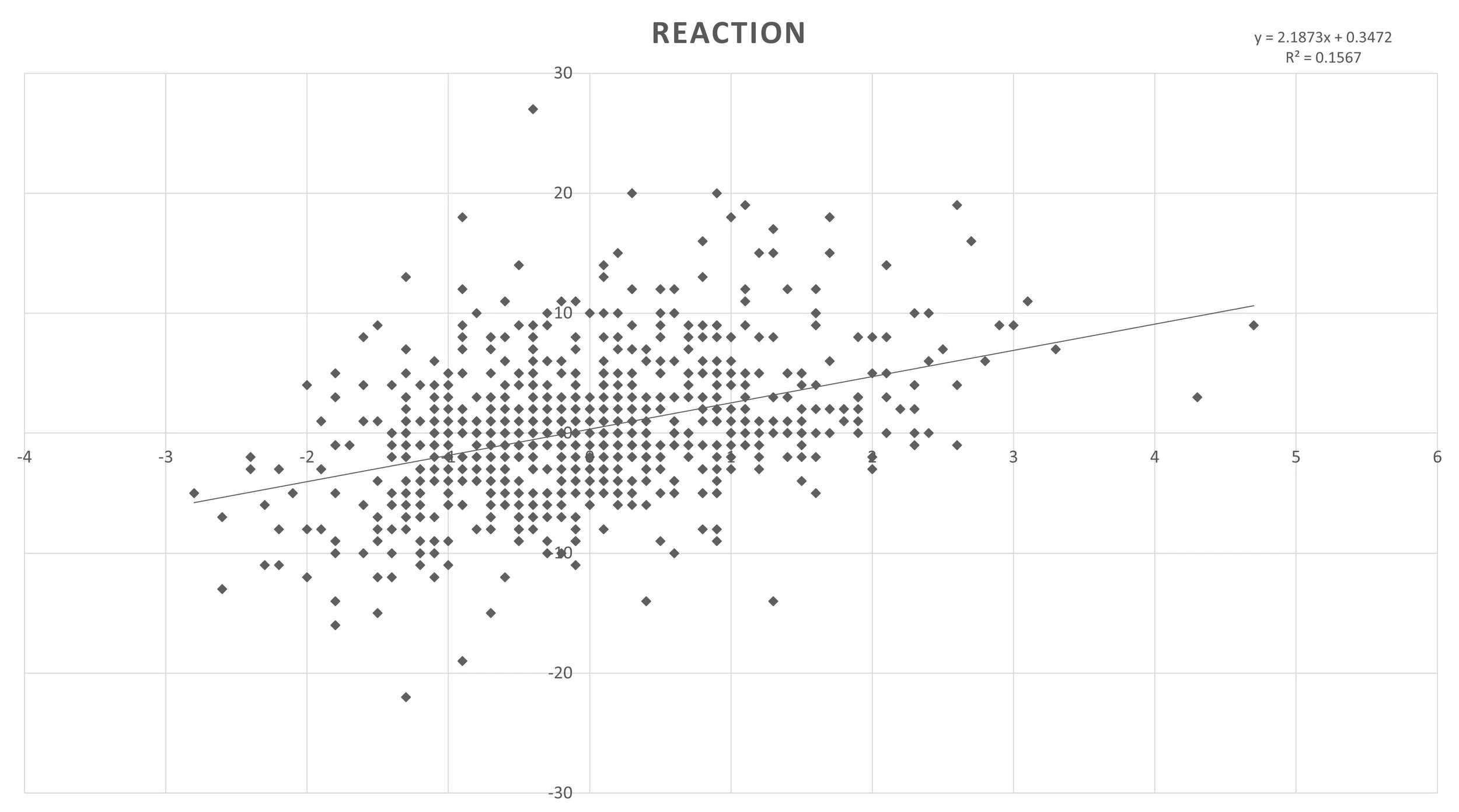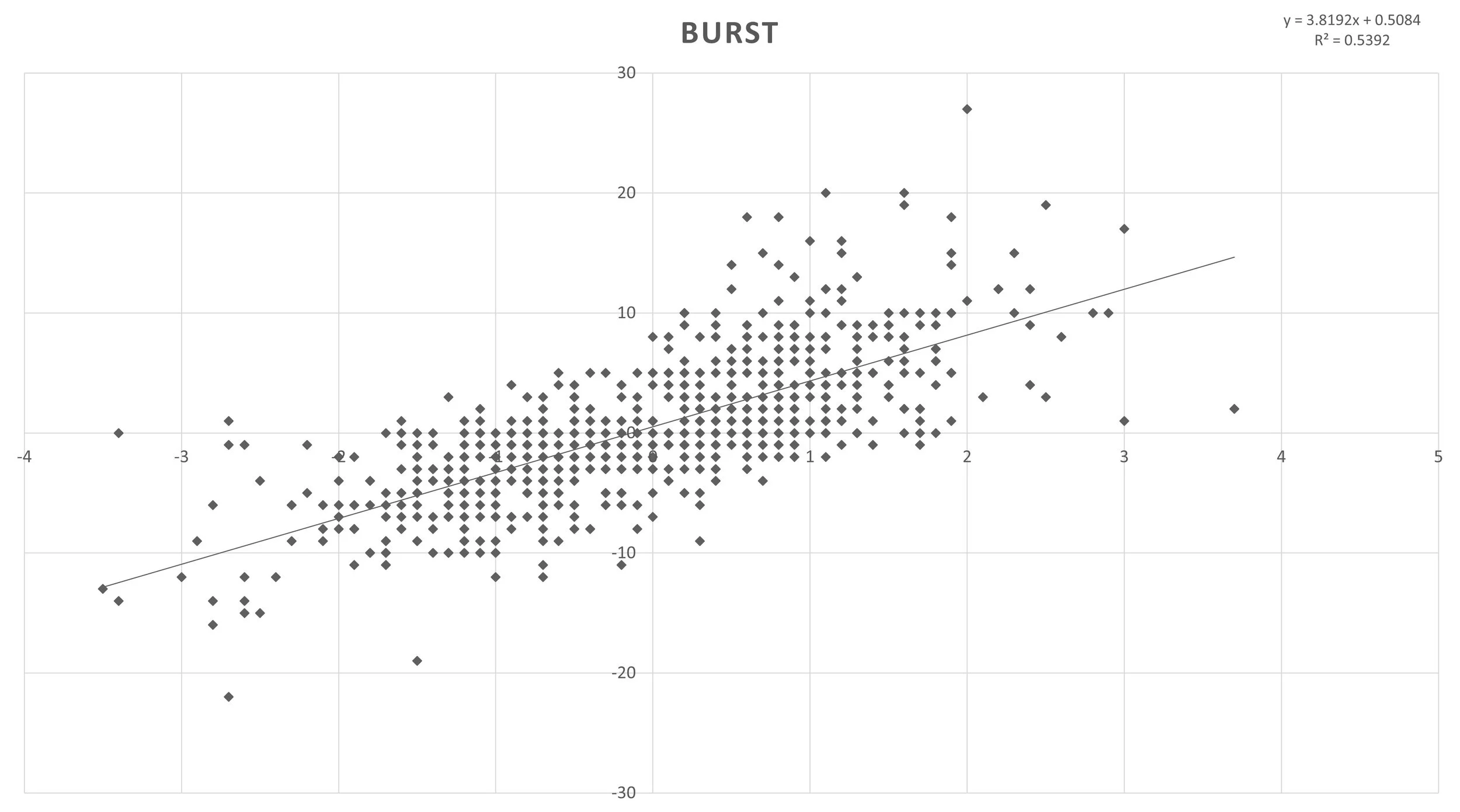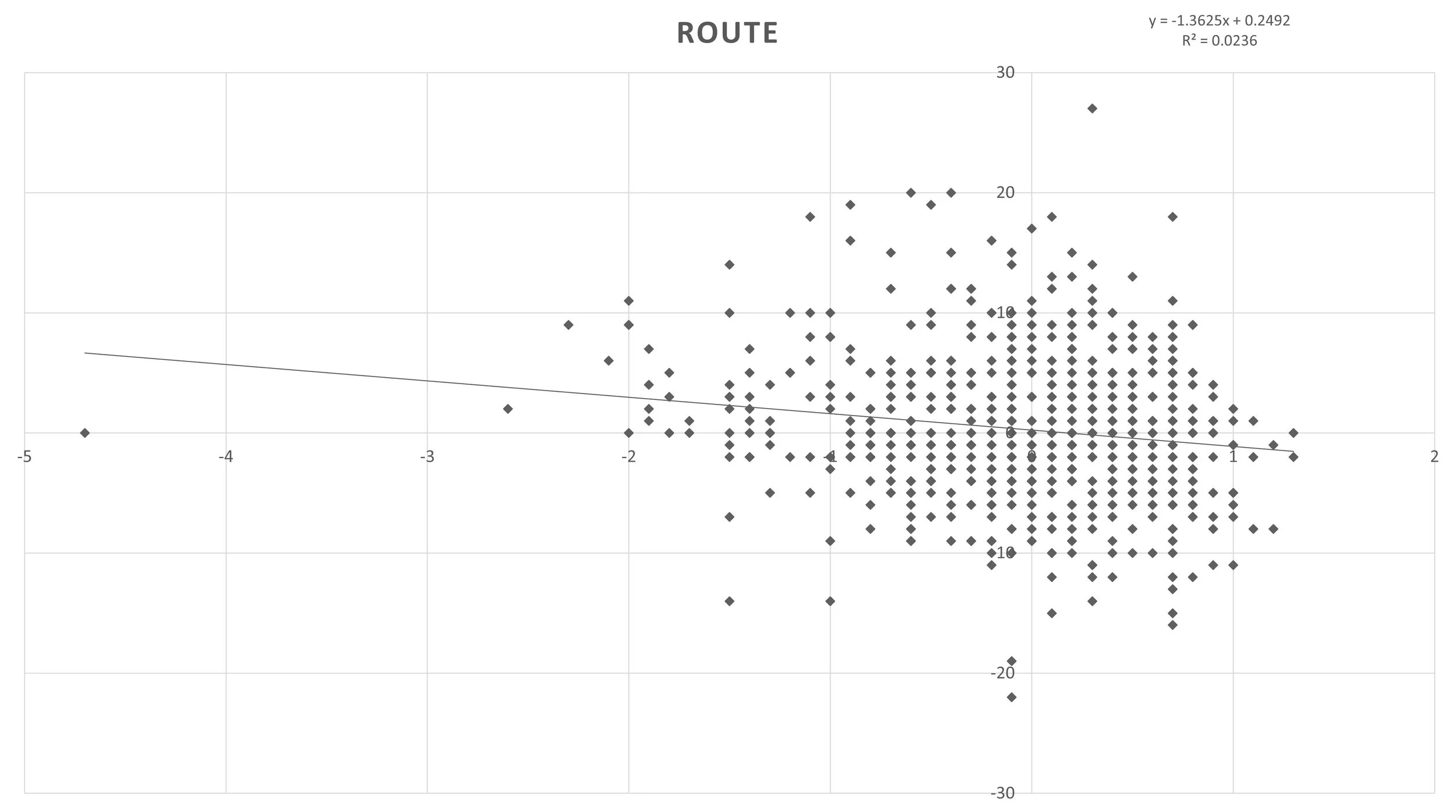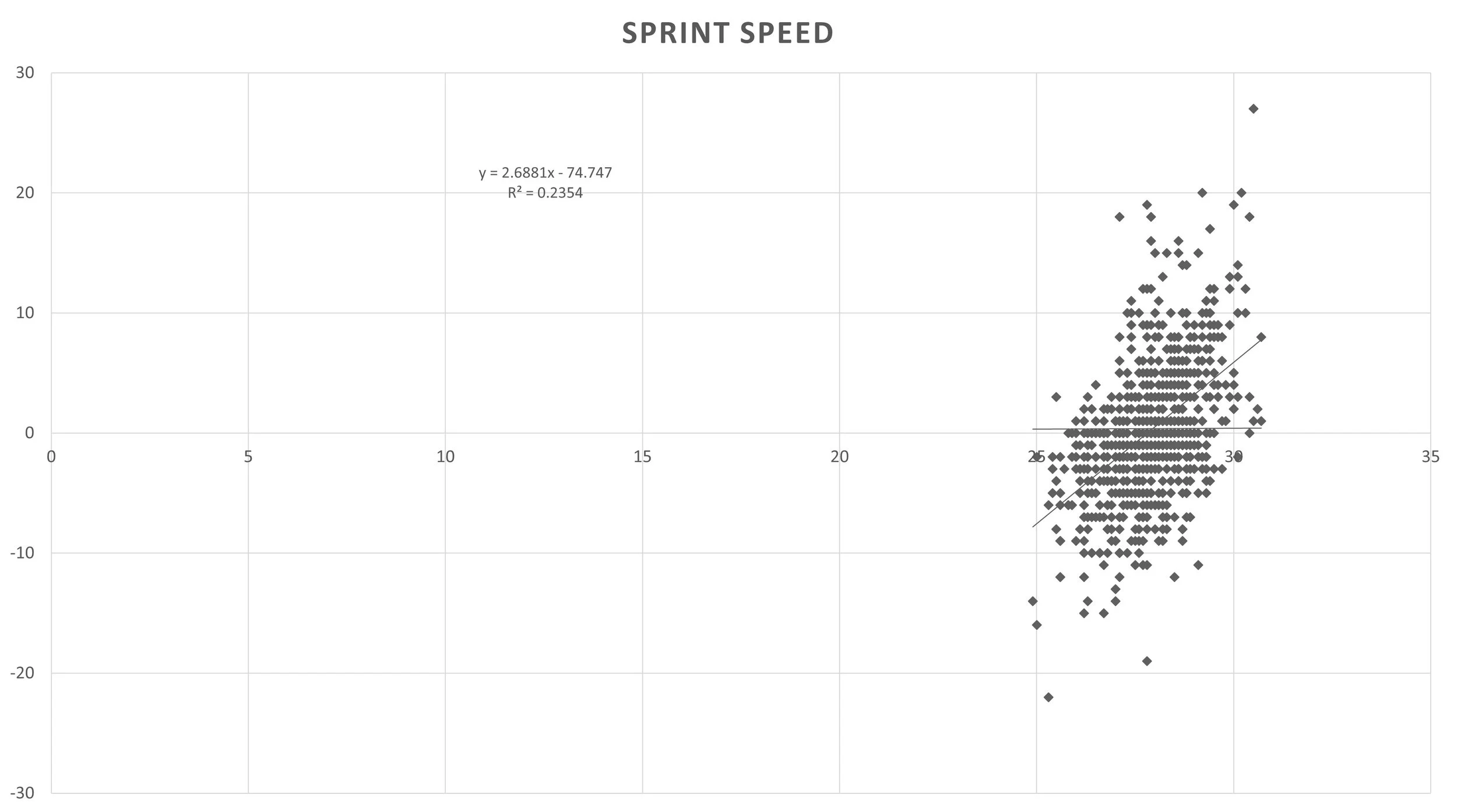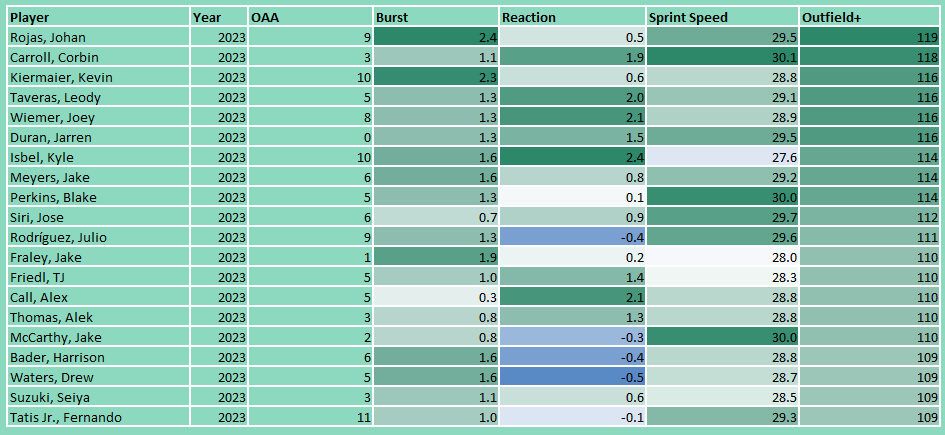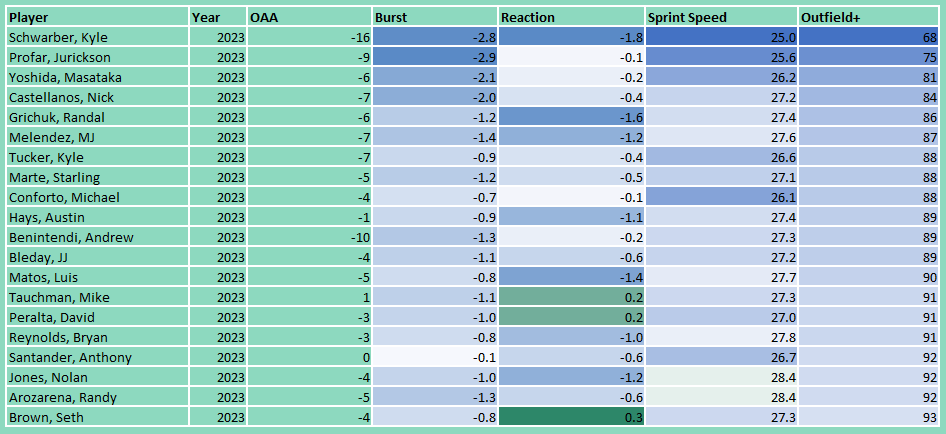Who Are the Best Defensive Outfielders in the MLB?
Photo Credit: Miles Kennedy/Phillies
When evaluating an outfielder’s ability to track and catch fly balls, two of the factors we look at most closely are the outfielder’s jump and the outfielder’s speed. Statcast breaks an outfielder’s jump down into three components: reaction for the first 1.5 seconds, burst for the next 1.5 seconds, and route efficiency for the first 3 seconds.
In this analysis I’ll determine which factors are the most important for an outfielder’s success, and use those factors to project the top defensive outfielders in 2024.
My dataset includes every qualified outfielder since 2016. Outs Above Average (OAA) is the variable used to measure outfielder success. Figure 1 through Figure 5 below illustrate the factor correlations.
Figure 1: OAA vs Reaction (feet vs average) for outfielders since 2016.
As seen in Figure 1, a moderate positive correlation (r=0.40) exists between an outfielder’s reaction and his defensive performance.
Figure 2: OAA vs Burst (feet vs average) for outfielders since 2016.
A strong positive correlation (r=0.73) exists between an outfielder’s burst and his defensive performance, as evident from Figure 2. The outfielder’s ability to accelerate toward the baseball is extremely important.
Figure 3: OAA vs Route Efficiency (feet vs average) for outfielders since 2016.
A weak negative correlation (r=-0.15) exists between an outfielder’s route efficiency and his defensive performance, illustrated in Figure 3. Why is this? Take a look at Figure 4 below.
Figure 4: Reaction vs Route Efficiency for outfielders since 2016.
The most efficient routes are taken by the outfielders with the worst reactions. These outfielders are preferring to wait and more accurately visualize where the batted ball is going, instead of immediately breaking towards the general vicinity of where the ball is going, and it is costing them.
Figure 5: OAA vs Sprint Speed (feet per second) for outfielders since 2016.
A moderate positive correlation (r=0.48) exists between an outfielder’s sprint speed and his defensive performance, illustrated by Figure 5.
Through the analysis above, we have found the three most important factors in predicting outfield success.
Table 1: Correlation between each positive outfielder attribute and OAA.
Now that we know the most important factors for outfield success, let’s determine which outfielders are expected to have elite defensive seasons in 2024.
I created the normalized (100 is league average) composite metric called Outfield+ by weighting each of the three positive outfielder attributes by their correlations with OAA.
Table 2 shows the top outfielders from 2023 based on burst, reaction and sprint speed, sorted by Outfield+.
Table 2: Top outfielders from 2023 based on Burst, Reaction, and Sprint Speed; sorted by Outfield+.
Phillies 23-year-old Johan Rojas projects to be the best defensive outfielder in 2024, 19% better than league average. Reigning NL rookie of the year Corbin Caroll, four-time gold glove award winner and 2015 platinum glove award winner Kevin Kiermaier, Rangers centerfielder Leody Taveras, and Brewers 24-year-old Joey Wiemer round out the top five.
Let’s also take a look at the outfielders that are more in the lineup for their bats than their gloves.
Table 3: Bottom ranked outfielders from 2023 based on Burst, Reaction, and Sprint Speed; sorted by Outfield+.
Kyle Schwarber, Jurickson Profar, Masataka Yoshida, Nick Castellanos, and Randal Grichuk project to the be the bottom five defensive outfielders in 2024.

